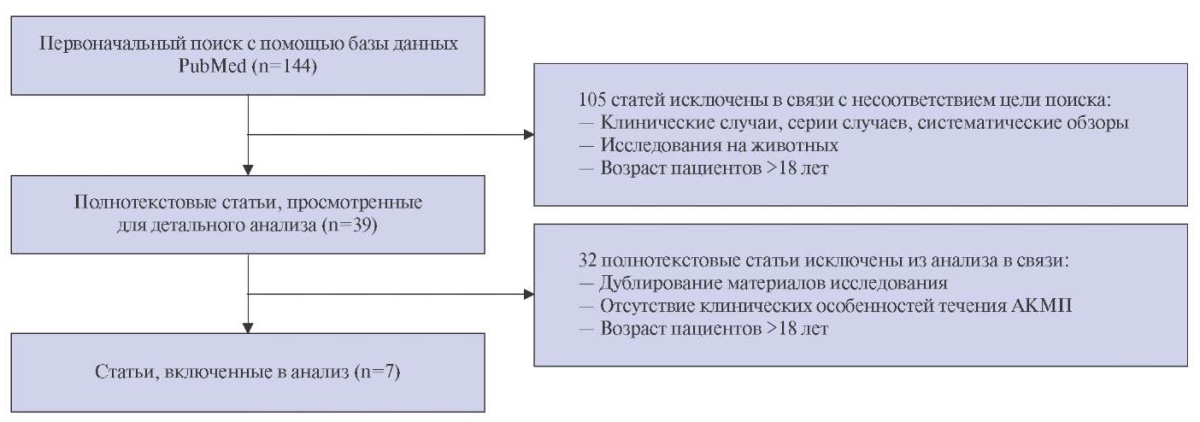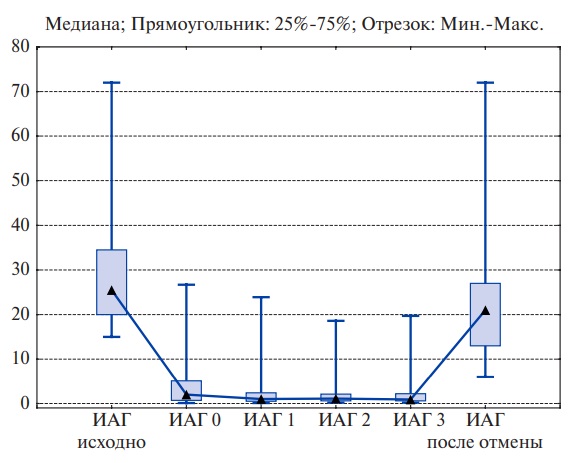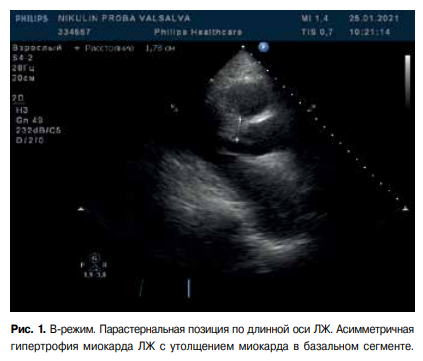Clinical characteristics of various arrhythmogenic cardiomyopathy phenotypes in the pediatric population: a systematic review and meta-analysis

Arrhythmogenic cardiomyopathy (ACM) is a genetic disease characterized by ventricular arrhythmias with involvement and deterioration of ventricular function as a result of progressive fibro-fatty replacement of normal heart tissue [1][2]. In 1977, Fontaine G proposed the term arrhythmogenic right ventricular (RV) dysplasia, because initially it was believed that this disease affects only RV myocardium [3]. However, already in the 21st century, data appeared about the involvement of both the left ventricle (LV) and RV in the pathological process. And, if initially such forms were considered as atypical variants of arrhythmogenic RV dysplasia, then the accumulated data over the past decades have confirmed the existence of three variants of this nosology: right ventricular, left ventricular, biventricular (BV) [4-7]. And in 2019, the working group of the Heart Rhythm Society adopted a common term for this disease, regardless of the phenotypic variant — ACM [6].
At present, according to the literature, the prevalence of RV ACM in the adult population varies from 1 per 2 thousand to 5 thousand people [8]. The incidence of this disease in the pediatric population remains unknown to date. This is probably due to the fact that, as a rule, ACM is characterized by a gradual development and manifestation of the disease between the ages of 20 and 40 years [9].
During this pathology, several phases are distinguished, and the clinical picture of the disease is very diverse — from an asymptomatic course to sudden cardiac death (SCD) [10]. The greatest concern is initial phase of ACM, which is also called the “concealed” phase. It is characterized by the absence of electrocardiographic and morphofunctional signs, but at the same time, an extremely high risk of SCD [11][12]. It is known that in children it is often sudden cardiac arrest and SCD that are the first signs of the disease. Thus, the work of Corrado D, et al. showed that in the structure of SCD among adolescents in the Veneto region in Italy, 20% falls on previously undiagnosed ACM [13].
At the moment, a multiparametric approach has been adopted in the diagnosis of ACM, based on the results of paraclinical investigations, such as electrocardiography, echocardiography, magnetic resonance imaging, Holter monitoring, histological and genetic examination, as well as information about family history, according to 2010 Task Force criteria [10]. In addition, the 2020 Padua Criteria were developed to improve the detection of “nonclassical” ACM forms.
Nevertheless, despite such a multifaceted approach to the diagnosis of ACM, the identification of ACM is a difficult task, especially in the pediatric population [14-16]. This is due to the peculiarities of the physiological development of children and the existing differences in the clinical performance of the disease. In addition, neither the 2010 Task Force criteria nor the Padua criteria took into account the possibilities of diagnostic search in pediatric patients.
However, attention should be paid to the important and sometimes key role of family history in the detection of ACM in children [17]. Thus, the presence of familial cases of ACM and/or SCD is an absolute reason for in-depth medical examination and follow-up monitoring. Also, an increase in clinical symptoms in the form of the appearance/ increase of complaints about palpitations, syncope, signs of heart failure (HF), etc., indicate the progression of the disease and an increased risk of SCD [12][18][19]. It should also be noted that there is a high concern about SCD risk stratification, as well as indications for the implantation of an implantable cardioverter-defibrillator (ICD) for the purpose of its primary prevention in children.
Thus, all of the above makes it relevant to study the clinical features of ACM course, as well as data on its outcomes and prognosis in children, and was the reason for this systematic review with meta-analysis.
In this regard, the purpose of this analysis was to study the features of the clinical course, outcomes and prognosis in various ACM forms in pediatric patients.
Material and methods
Search for publications and selection of studies. The information retrieval algorithm was developed in accordance with the requirements and reporting guidelines for systematic reviews and meta-analyses (PRISMA) in the PubMed database (144 articles) and included the search for studies using search queries, keywords (including MeSH) and logical operators. According to the search goal, abstracts, proceedings, books, case reports and case series were not used. English has been set as the language limit. Three authors independently examined the titles and abstracts of publications for compliance with the inclusion criteria. The disagreements were resolved through discussion or with the involvement of the fourth author. Studies were first screened by reading titles or abstracts to exclude reviews, case reports, or irrelevant articles, and then studies were selected by reading the full text. Studies were considered eligible if they were: 1) samples of pediatric patients with confirmed ACM, where their clinical characteristics, data on prognosis and disease outcomes were presented; and 2) studies comparing clinical signs in pediatric patients with different ACM forms.
The following keywords in the PubMed database were used: “arrythmogenic cardiomyopathy” and “Padua criteria” and “children” or “Phenotype” and “arrhythmogenic cardiomyopathy” and “children” or “right ventricular arrhythmogenic dysplasia and pediatric population”.
The last search was carried out on March 08, 2022.
Inclusion/exclusion criteria. The systematic review included only those studies in which the initial data were adequately presented — a complete description of the clinical performance for various ACM forms in pediatric patients. A prerequisite for the inclusion of publications in the meta-analysis was the availability of data on clinical features, outcomes, and prognosis of the disease. Age up to 18 years (inclusive) was considered a limitation of this review. Animal studies, reviews, case reports and case series were also excluded. It should be emphasized that the number of patients included in the studies was not a determining factor in our selection.
Extraction and synthesis of research data. A total of 144 publications (PubMed) were retrieved in the initial screening using the search queries described above.
For each study, the following data were recorded: first author, year of publication, study population, number of cases, age at onset of ACM, sex, disease symptoms, outcome and treatment data, and phenotypic traits based on Task Force 2010 criteria and the Padua Criteria: family history of ACM, SCD. Any disagreements were resolved by discussion or with the participation of the fourth researcher.
Statistical analysis. Data meta-analysis was carried out using the free Open Meta-Analyst software. When summarizing the data from individual studies, given the significant statistical heterogeneity of most indicators, a random effects model was used. Percentages with 95% confidence intervals (CI) were calculated using the DerSimonian-Laird method [20]. The results of the meta-analysis were presented in the form of a forest plot.
Comparison of the data of RV ACM with LV and BV forms was performed by calculating the generalized frequency of pathological conditions with a preliminary addition of the number of cases and the number of patients studied in separate publications. Next, the statistical significance of differences in indicators was assessed using Pearson’s chi-square test, and the odds ratio was calculated with 95% CI. Differences were considered significant at p<0,05.
Results
As shown in Figure 1, we initially received 144 studies. Further, 39 articles were retained using electronic and manual searches after removing duplicates, review articles, case reports, or studies not suitable for our analysis. The full texts of the 39 remaining studies were reviewed and 32 of these were excluded because they were: a) studies that included patients over 18 years of age (n=19); b) studies that did not present the clinical features of ACM course (n=11); and c) studies with duplicate data (n=2), with both studies excluded due to inclusion of patients over 18 years of age. As a result, 7 out of 144 studies [9][21-26] were included in the systematic review and meta-analysis (Table 1). Five of them present the clinical features of various phenotypic variants of ACM: four show the course of the RV form, and one [24] shows all three variants of the disease. Two studies [21][26] give a general description of the course of various ACM forms. These 2 works [21][26] were also included in the analysis after discussion by the authors.
Due to the fact that information on the prevalence of symptoms and outcomes in “non-classical” forms of ACM was presented in single studies, a meta-analysis was not conducted in this case. It was performed only for cases of RV form, as well as for the overall frequency of symptoms and outcomes.
Clinical characteristics of ACM. A total of 282 middle-aged children aged 13,5±3,3 years were included in the analysis. The ratio of boys/girls in studies was 176/106 (62,4/37,6)%. Among the patients included in the study, 233 (82,6%) had a right-dominant ACM, 21 (7,45%) — left-dominant ACM, and 28 (9,93%) — BV form. All included articles present the clinical and/or electrocardiographic features of ACM course in pediatric patients.
Various symptoms of the disease were described in all included studies and occurred in almost half of the children (n=96, 43,8%). The most frequent manifestations of the disease were palpitations and signs of heart failure; syncope and SCD were less common. Thus, the signs of heart failure are reported in all included studies. However, a quantitative characteristic is presented only in 2 works and was observed in 29 (25,4%) people. Palpitations, syncope were presented in 4 studies and occurred in 36 (27,5%) and 24 (18,3%) patients, respectively. Five papers describe cases of SCD, which were registered in 18 (9,09%) patients.
The data on overall frequency of the studied clinical conditions in any ACM form are presented in Table 2.
According to a meta-analysis of the frequency of various pathological conditions in ACM of any form, almost half of the cases had various symptoms (49,2%), while the prevalence of sudden cardiac arrest and SCD was somewhat lower than with a simple combination of study data, and amounted to 5,1 and 7,1%, respectively.
A description of the clinical characteristics of patients, taking into account the phenotypic variants of ACM, is presented in Table 3.
When assessing the prevalence of symptoms in patients with RV ACM, the following data were obtained (Figure 2).
According to the presented forest plot, symptoms were noted in 65 out of 166 patients with RV ACM described in 4 publications. The incidence of symptom detection in the meta-analysis was 47,7% (95% CI: 7,8-87,6%). A significant range of 95% CI limits is due to the high statistical heterogeneity as follows (I2=98,0%, p<0,001): the prevalence of symptoms in the analyzed studies ranged from 26,4% (Bauce, 2011) to 97,2% (Daliento, 1995).
The results of a meta-analysis of the proportion of cases of sudden cardiac arrest are presented in the following forest plot (Figure 3).
According to the data presented in 5 publications, sudden cardiac arrest occurred in 14 out of 184 subjects. The incidence of sudden cardiac arrest according to the meta-analysis was 5,8% (95% CI: 0,9-10,7%). The statistical heterogeneity of the score was significantly lower than for the frequency of symptoms (I2=52,8%, p=0,075): the data ranged from 1,9% (Bauce, 2011) to 18,8% (DeWitt, 2016).
Similarly, a meta-analysis of data on the frequency of SCD was carried out. The results are presented in Figure 4.
This complication occurred in 17 out of 161 analyzed patients, the frequency of SCD was studied in 4 publications. Meta-analysis showed that the pooled incidence of SCD was 8,7% (95% CI: 3,4- 14,0%) with little statistical heterogeneity (I2=31,2%, p=0,225). The rate ranged from 2,9% (DeWitt, 2016) to 14,7% (Riele, 2015).
Thus, it should be noted that there are sufficiently certain data on the revalence of sudden cardiac arrest and SCD, which are characterized by moderate and slight heterogeneity, respectively. At the same time, data on the frequency of various clinical symptoms presented in the analyzed works varied over a wide range (Table 2).
Using the data of DeWitt (2016), where the clinical performance of the disease was analyzed in terms of morphological ACM forms, the overall incidence of sudden cardiac arrest in RV ACM was compared with the rate in LV or BV ACM (Table 4).
According to the data obtained, the incidence of sudden cardiac arrest in RV ACM was 7,6% according to 5 studies, while in LV and BV ACM according to the study by DeWitt (2016) — 14,3 and 11,1%, respectively. There were no significant differences in indicators both when comparing the RV and LV forms (p=0,441), and when comparing the RV and BV ACM (p=0,525).
The median age at diagnosis was presented in three studies and averaged 14,14±2,83 years.
Family history of ACM. Cases of ACM in the family were reported in all studies included in the analysis. However, a quantitative characteristic is presented only in 4 studies, according to which the family history was burdened in 149 (88,2%) patients. It should be noted that the description of the family history for the disease, taking into account the ACM, is presented only in 2 studies conducted on patients with RV ACM, and occurred in 54 (71,1%) patients.
Treatment with ICD and prognosis of ACM. Heart transplantation according to a systematic review was performed and/or indicated in 22 (11,6%) patients, which is reflected in 5 studies. At the same time, in 3 studies we calculated data taking into account the ACM form. Thus, in the vast majority of patients (89%) referred for transplantation, BV was diagnosed, in a third of patients (29%) — LV, and in 0,9% of cases — RV ACM.
ICD was implanted in 79 (39.7%) patients according to 4 studies. Only 2 studies describe in detail the indications for ICD in children. Thus, in half of the cases, ICD implantation was carried out for the purpose of primary prevention and in a third of patients for the purpose of secondary prevention of SCD (39 (45,9%) and 30 (35,3%) children, respectively). The assessment of this type of treatment, taking into account the phenotypic variant of ACM, is presented in 2 studies, which included only patients with RV aCM, and was described in almost half of the patients 57 (48,7%).

Figure 1. Publication selection algorithm.
Abbreviation: ACM — arrhythmogenic cardiomyopathy
Table 1
Studies included in the systematic review

Abbreviations: ACM — arrhythmogenic cardiomyopathy, BV — biventricular, LV — left ventricular, RV — right ventricular.
Table 2
The overall prevalence of the studied symptoms in ACM of any localization

Abbreviation: CI — confidence interval.
Table 3
Clinical characteristics of patients included in the systematic review

Abbreviations: BV — biventricular, LV — left ventricular, RV — right ventricular.

Figure 2. Meta-analysis of the incidence of symptoms in patients with RV ACM.
Abbreviation: CI — confidence interval.

Figure 3. Meta-analysis of the incidence of sudden cardiac arrest in patients with RV ACM.
Abbreviation: CI — confidence interval.

Figure 4. Meta-analysis of the incidence of SCD in patients with RV ACM.
Abbreviation: CI — confidence interval.
Table 4
Results of comparing the prevalence of sudden cardiac arrest in various ACM forms

Abbreviations: BV — biventricular, LV — left ventricular, RV — right ventricular.
Discussion
ACM is very rare in the pediatric population. First of all, this is due to the difficulties in its diagnosis. Unfortunately, SCD is often the first symptom in this pathology and occurs much more frequently than in adults [27][28].
Seven studies were included in this systematic review. Five of them describe the clinical features of various phenotypic variants of ACM. It should be noted that only 1 study presented the clinical features of left-dominant and BV ACM [24], and 4 studies presented RV form. The authors decided to include 2 works [21][26], which show the general characteristics of various ACM forms. This decision is due to the lack of literature data on the clinical course, prognosis, and outcomes of this disease in the pediatric population.
The results of Bauce B, et al. dated 2011 [22] were assigned to the RV form. Despite the availability of information about the involvement of LV into the pathological process according to magnetic resonance imaging in 10 patients, the data provided are insufficient for diagnostic criteria for non-classical ACM forms.
Thus, in most patients, RV damage is described, which is probably due to the lack of developed criteria for the diagnosis of non-classical forms until recently. Thus, the Padua criteria, which were released in 2020 and developed for the diagnosis of ACM taking into account various options, unfortunately, have not yet been tested on a sufficient number of patients, including in the pediatric population.
According to our systematic review with metaanalysis, the mean age of children included in the study was 13,5±3,3 years. It should be noted that the works of DeWitt ES, et al. and Surget E, et al. showed an earlier onset and rapid progression of the disease in left-dominant and BV forms, which is characterized by an earlier onset of symptoms and an increase in signs of heart failure. Thus, the work of Chungsomprasong P, et al. demonstrates the involvement of LV in the pathogenesis of ACM in children and adolescents as a predictor of adverse outcome, including the need for heart transplantation at an earlier age [29].
The number of boys was 1,66 times more than girls (1,7:1), which corresponds to the literature data [18]. It should be emphasized that male sex in patients with ACM is associated with a higher risk of SCD and a worse prognosis [18][30]. However, in our systematic review, we were unable to evaluate this association because research data were not provided in full.
Family history for ACM is positive in almost 90% of cases, which indicates the need for a careful family history taking and next-of-kin examinations.
According to our data, the most common symptom of the disease in children was palpitations, signs of heart failure, and syncope. The incidence of SCD was almost the same in the included studies and averaged 6%. According to our results, there were no significant differences in the incidence of sudden cardiac arrest in patients with right-dominant form compared with left-dominant form and BV. However, in a recent work by Roudijk RW, et al. a connection between arrhythmic events and BV dysfunction in ACM has been shown [19]. Also, a study by Aquaro GD, et al. showed that the 5-year risk for SCD in ACM was significantly higher in patients with LV involvement. Thus, LV involvement can be considered as a marker of worse prognosis [31]. However, it is important to remember that the risk of SCD in ACM is always present over time, regardless of phenotype [16].
In addition to clinical symptoms, we assessed the outcome of the disease. Heart transplantation was performed in almost a quarter of patients. At the same time, the number of children with BV ACM significantly prevailed, which is explained by the involvement of both ventricles in the pathological process and the rapid increase in signs of heart failure.
This systematic review was not intended to study the specifics of therapy in children with different ACM types, since it mainly includes drugs to correct the symptoms of HF and antiarrhythmic therapy. However, we evaluated the frequency of ICD implantation as primary and secondary prevention of SCD. Thus, ICD implantation was carried out for the purpose of primary prevention of SCD in almost half of the cases with this type of treatment and a little more than a third for the secondary purpose. This indicates a high risk of SCD in ACM.
Thus, according to our systematic review with meta-analysis, despite the high heterogeneity of symptoms in the presented works, every second patient had any clinical manifestations of the disease. We did not reveal any specificity of clinical signs, taking into account the phenotypic variant of ACM. It should be noted that an earlier onset and unfavorable course are characteristic of “nonclassical” ACM forms. ACM is characterized by a high risk of SCD, which requires appropriate treatment.
Study limitations. This systematic review has a number of limitations. ACM is a relatively rare disease, and we have encountered great difficulty in collecting study data on clinical features, outcomes, and prognosis in children. In the articles selected for analysis, there were significant differences in both the design and description of the research results. Unfortunately, these differences did not allow to establish more accurate correlations of clinical features in various phenotypic variants of ACM in the pediatric population.
Of course, it is necessary to conduct large studies with a clear design, division into phenotypic variants, which assess the clinical features, prognosis and outcome of various ACM forms in children.
Conclusion
Thus, our systematic review with meta-analysis presented the clinical features of the course of various ACM forms, as well as data on the outcomes and prognosis of this disease in the pediatric population. Given that this is a progressive disease with a high risk of SCD, it is extremely important to make a timely diagnosis. Undoubtedly, further studies are required to study both the clinical and electrocardiographic features of ACM and to develop diagnostic criteria in the pediatric population. In the future, the authors plan to conduct a systematic review with a meta-analysis on the electrocardiographic features of various phenotypic ACM variants in the pediatric population.
Relationships and Activities. The study was financially supported by the Ministry of Science and Higher Education of the Russian Federation (Agreement № 075-15-2022-301 dated April 20, 2022).
Чтобы читать статью войдите с логином и паролем от scardio.ru
Keywords
For citation
Alekseeva D.Yu., Kofeynikova O.A., Marapov D.I., Vasichkina E.S. Clinical characteristics of various arrhythmogenic cardiomyopathy phenotypes in the pediatric population: a systematic review and meta-analysis. Russian Journal of Cardiology. 2022;27(4S):5146. https://doi.org/10.15829/1560-4071-2022-5146
Copy







